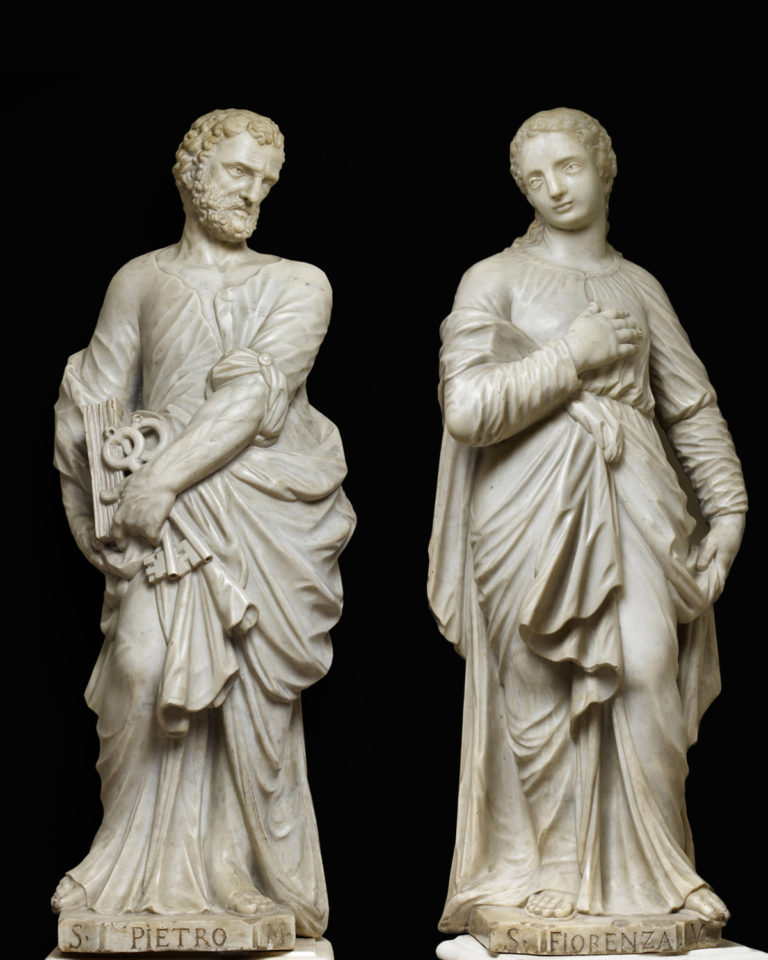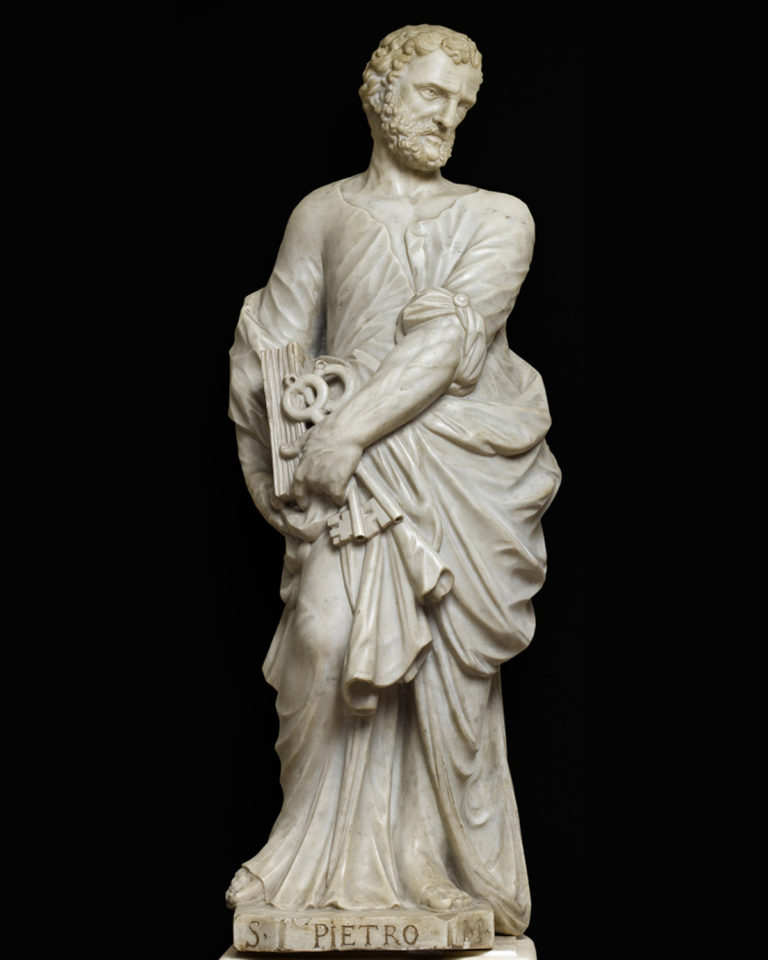Statues of Saint Peter and Saint Florence in white marble. On the bases are inscribed "S. Pietro M." and "S. Florenza V."
Dimension: H: 40,15 in
18th century period.
Attributed to Giovanni Maria MORLAITER (Venise, 15/02/1699 – 22/02/1781), Venetian school.
Saint Peter is very easily recognizable by his attributes, a book and two keys, one in gold, celestial and the other in silver, earthly, which allows him to open and close the doors of Paradise.
Saint Florence is more enigmatic. She is depicted as a woman with loose hair, with her hand on her heart. Three saints are known by this name : Saint Florence of Adge, Saint Florence of Cartagena, canonized with his brothers and sisters, and finally Saint Florence of Comble.
Each statue is a monolith of white marble, designed to be seen from a low angle. The artist accentuated the upper limbs, and cared for the « undersides » of draperies with studied folds. St Florence, sweet and soothed, holds her toga with one hand in a slight contrapposto, sketching a step, the other hand on her heart.
Saint Pierre gives by opposition a feeling of firmness, reinforced by a more severe look. The two saints are dressed in the antique manner, simple brooches or fibulae retaining the fabrics.
If the pose, very static, with slightly inclined heads, resumes medieval cannons, the elegant and mannerist treatment of the fabrics with folds softened, without frank breaks, and the treatment of the hands of St Peter, all these elements allow us to attribute these works to Giovanni Maria Morlaiter, considered one of the greatest Venetian sculptors of the 18th century.
The richness of the material, white marble very expensive, may suggest that these sculptures were ordered by an important sponsor for his private chapel.
Giovanni Maria Morlaiter :
He was a founding member of the Accademia of arts in Venice.
Almost all the sculpture in the church of the Gesuati, Venice is the work of Morlaiter, a real masterpiece. A few historians in Art describe him as one the best sculptors. Hugh Honour describes him as "one of the ablest sculptors in eighteenth century in Venice"[1] and Semenzato as "the most brilliant interpreter of the rococo in Venetian sculpture". There is more of his work in the church than anywhere else in Venice.[2]
His first work for the church was the Glory of Angels (1738) on the second altar on the right, and after this Massari engaged him for all the other principal works of sculpture, ending with the statue of Melchisedek (1755). Clockwise from the entrance, the statues in six niches and coupled bas reliefs above are: Abraham (1754) and Jesus and the Centurion (1754); Aaron (1750) and Jesus heals the blind (1750); Glory of Angels (1739); St Paul (1745) and Jesus appears to Magdalen (1743); Christ appears to doubting Thomas (1747; no niche); Baptism of Jesus (1746); St Peter (1744); Christ and Samaritan at Well (1744); Moses (1748–50) and Healing of Paralytic (1748–50); Melchisedech (1755) and St Peter walks on water (1755).
Other works from him which can be seen in two other churches in Venice :
- Gerolamo Emiliani, church Santa Maria della Salute, Venice
- Madonna del Rosario, church San Geremia, Venice


